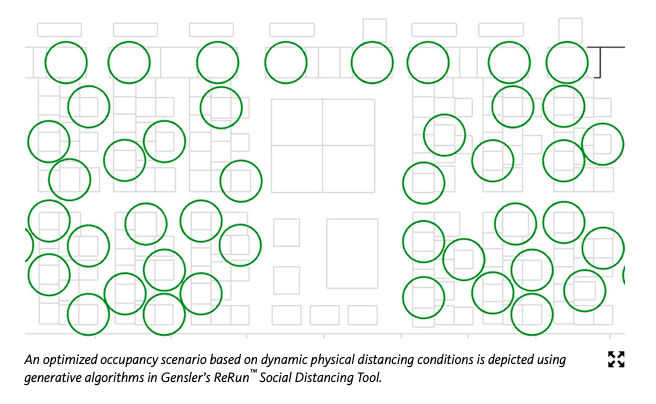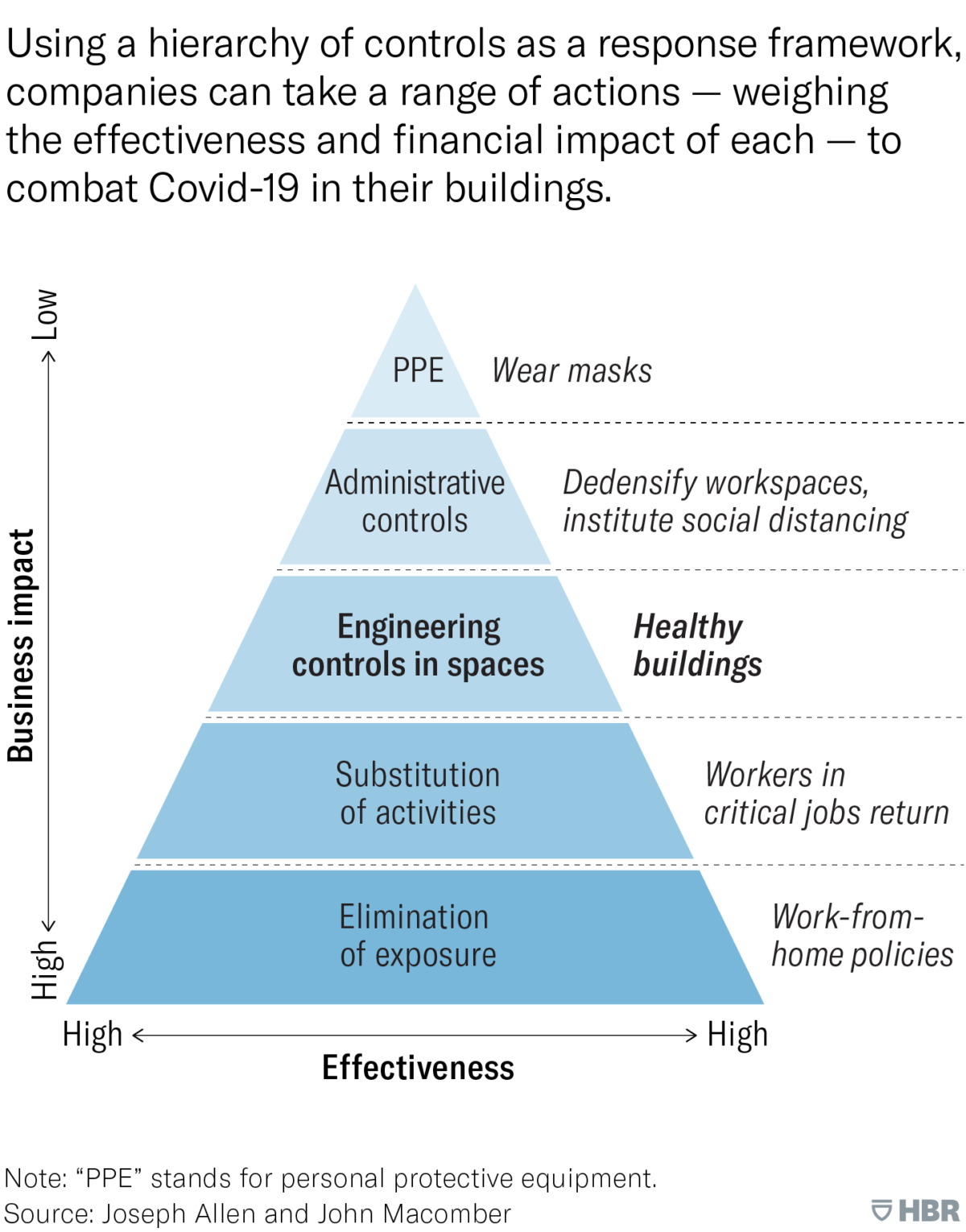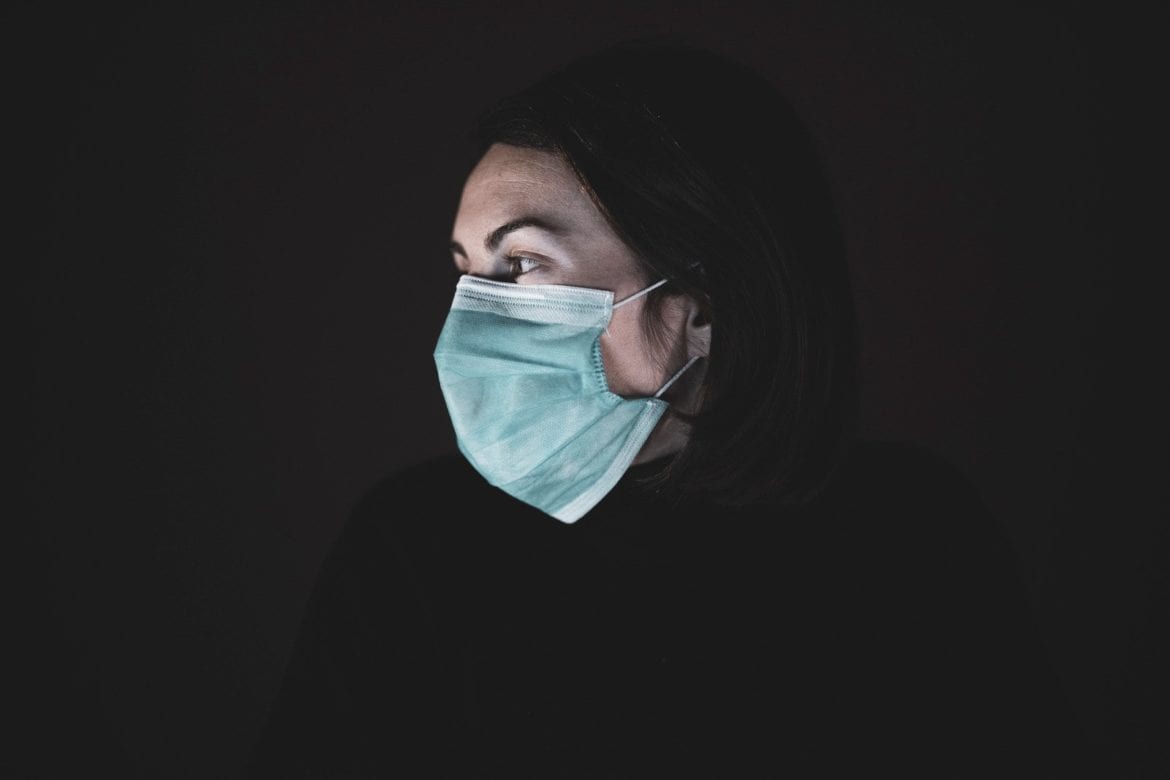|
Getting your Trinity Audio player ready...
|
With countries around the world beginning to ease restrictions, the thoughts of many in the magazine media industry are turning to when and how, and if they will return to the office.
We asked FIPP members, experts and partners cross the industry, about the return to the office post-pandemic, and what might change when they get there. We gathered insights around what they have experienced and practices they will take forward as members plan and prepare for a gradual return to the office. Trends we see happening include a shift and acceptance of working from home, of flexible work spaces, of healthy buildings, and culture changes.
Working from home
This pandemic has changed our practices around remote working. As an industry, we’ve embraced video conferencing for webinars, summits, launches, and brainstorming sessions. We’ve embraced and increasingly rely on project management software like Basecamp, Trello, Asana, messaging apps, and cloud-based software like Google Docs to keep in touch and keep on track, in addition to all of the other technologies we were using before. “We already have tools that some teams have been using, but I think we’re now going to be forced to use them more universally,” explained John Wilpers, Senior Director/USA for Innovation International Media Consulting and author of FIPP’s Innovation in Media World Report.

Going forward, companies may increasingly embrace remote work and flexible working arrangements, as employee safety becomes a priority and employers are looking to limit exposure.
Working from home may go from being a hashtag, to the new normal.
Big offices might be “a thing of the past,” Barclay’s CEO Jes Staley told The Guardian. WPP CEO Mark Read wrote in a memo that the company “will take action to greatly reduce the density of people in our buildings and the amount of travel to and from work.” The CEOs of Morgan Stanley and Goldman Sachs have indicated that “working from home could be the new normal for many employees going forward,” and there may be reduced demand for office space, reports Canadian financial title Advisor’s Edge.
As the Brookings Institute suggests, we will likely continue telecommuting long after the pandemic is over. It says up to half of American workers are currently working from home. Twitter has said its employees can work remotely “forever,” and Facebook has announced it will permanently shift up to half of its employees to remote.
Agustino Fontevecchia, Digital Director at Perfil in Argentina, said they are still not sure when the post-pandemic world will begin to occur as they are heading into the flu-season, but it is clear that in the short-to-medium term things will have to change. He explained the coronavirus outbreak has forced the company to learn to work remotely as an organisation. “We had differing levels of technological adaptability which meant that in the first few weeks it was difficult to schedule conference calls with certain teams, or to figure out a work routine that was compatible with people working from home,” he said.

“As the adrenaline of the first few weeks eased, we were also forced to consider whether our staff was able to perform their duties remotely, and in some cases where they couldn’t we tried (are continuing to try) to train them and transition them to new roles. Remote working does allow for a different level of productivity, and we will surely increase it. Yet, it also makes it clear that being physically present has its advantages including greater concentration/less multi tasking when communicating with others and the capacity to efficiently work in a team in a high pace environment without the lags of digital communication,” Fontevecchia said.
“From an organisational standpoint maybe what’s interesting is to note that we have aggressively accelerated our transformations trying to pass more people to our digital and TV operations from print (which includes sales teams, distribution teams, etc).” he said. “As the coronavirus pandemic eases, we will see a Perfil that is much more focused on missions including maximising digital traffic, launching a successful paid content strategy, and consolidating a new broadcast TV channel.”
At Meredith Corporation, Chief Strategy Officer Daphne Kwon said they were surprised at how adeptly they were able to successfully shift their operations and maximise productivity out of the office. “We produced every news broadcast, magazine, and digital experience without fail. We’re in the process of integrating everything we’ve learned from the past two months to innovate new processes during the recovery phase, and evaluating how to optimise these key learnings in the new normal,” she said.

Working at the office
Our office buildings won’t look the same when we next walk into them. And returning to them won’t be as simple as flipping a switch. Office spaces will have to be healthier, in order for people to feel safe being there, and what that means will differ. Changes that employees will see include heightened awareness around distancing, sanitation and disinfection, and visual clues around distancing.
Companies will de-densify their office spaces, which will mean fewer individuals coming into the office. Social distancing will mean that there will be more separation between those individuals. Technology might be able to help with this: there’s a physical distancing tool called ReRun, developed by global design and architecture firm Gensler which generates layouts for post-Covid workplace occupancy, and a space management tool Wisp, that visualises and colour-codes physical distancing.

Fontevecchia said for Perfil, “’the return to normalcy’ will be a very periodic process, meaning that at first we won’t have that many people in the office, so social distancing should be relatively simple. Yet, as our staff returns over the coming months, our space will begin to be more cramped. Meetings, as mentioned above, will have to be limited to less people, while our lunch room will certainly pose challenges. I have a feeling that initially people will be very conscious of social distancing. But we are also Latin, meaning that we are used to close personal contact, which will certainly also emerge relatively quickly. Our office is relatively big so we have space for people, but it will be a challenge to make sure people are responsible, and to be able to test and act quickly if something happens.”
In the US, Meredith has a Covid-19 taskforce to oversee how to bring their employees safely back to work. As Kwon explains, health and safety is paramount. “The health and safety of our employees and the communities in which we work are our top priorities as we continue to create and implement a flexible, iterative return to office plan,” she said. “Our pledge is to be cautious, analytical, and informed as we continue to monitor the guidance from healthcare professionals and government agencies.”
With offices across the country, the taskforce is following a best practices playbook that they tailor to each location, Kwon said. “In general, each location will have a limited number of staff return over time in phases as offices become accessible per local and state government guidelines. We are focused on limiting the number of people in the physical office, providing PPE and other supplies, employing best practices in cleaning and distancing, investing in signage and visual cues, restricting usage of all ‘community’ areas, and minimising outside visitors.”
At Gruppo Mondadori in Italy, the company has implemented all the preventive measures required to protect the health of its employees and associates since 23 February, in accordance with the provisions of the Ministry of Health and in conjunction with the company health officer. Mondadori set up a cross-functional crisis committee with workers’ representatives to indicate the urgent measures needed and coordinate actions taking account of the specific nature of each area in the company. It encouraged smart working and enabled almost all employees to do so from February onward.
“(Mondadori Group) published and made available to the entire company population a Company Anti-Contagion Protocol, containing the principles and rules adopted and to adopt,” according to a recent press release. The company also fitted itself with the necessary personal and corporate protective equipment, distributed sanitisers, and installed spray dispensers inside the premises.
For employees, Mondadori Group has also “carried out training on how to behave in order to perform remote activities safely, through online workshops and webinars, and introduced new services for employees and associates, including a website that is permanently accessible with all the necessary information, a dedicated email address to submit specific questions and requests, and psychological counselling desks both online and within the company.”
Flexible working spaces
Our office buildings and working spaces may see some big changes, but the changes brought about by this global pandemic should be catalysing for a new and more inspiring workplace, according to Brian Chen, co-founder and CEO of ROOM. Chen believes that the post-pandemic office will offer more flexibility for employees to work from home, to work from anywhere, “and that will increase the standard of what it means to be at the office, in that the office has this greater burden of providing inspiring workplaces,” he said.
“The office needs to be even more attractive than it was before the pandemic. It needs to be even more inviting and more inspiring as a workplace, because people will want to work from home if the office doesn’t provide a great sanctuary. Hopefully, it becomes an aspirational call to action for how we design offices as opposed to dystopian-like cubicles, which is what the headlines suggest.”
Chen sees a migration to a hybrid workplace, where a significant portion of the employee workforce is going to resume working from home because it’s proven to be effective, he explained. “There will be certain parts of the workforce that will go into the office because that’s the best place for them to be productive or because they have a purpose for it or they simply need to have physical presence in the office.”
In this hybrid office space, there will be an increased demand for privacy and increased demand for video conferencing space. “We think that the need for the kind of modular private spaces such as the one that we provide will only increase in demand,” Chen said.
Healthy office space is a competitive advantage
In a recent article for the Harvard Business Review, Joseph G. Allen and John D. Macomber write that healthy buildings can help fight disease and promote health. When businesses are allowed to re-open, they need to prepare for the return of their employees – with the goal of minimising risks to health. “In time, you will need to begin re-populating your building. This means you will be accepting some degree of risk,” they write in the article.
As companies prepare for returning employees, Allen and Macomber outline a layered defence companies can deploy.
Minimising risk in the workplace
 |
Companies can measure the success of their strategies using what Macomber and Allen call HPIs, or health performance indicators, which measure indoor environmental quality. “You may be thinking this all sounds expensive. But it doesn’t take a huge investment to create a healthy building and start reaping the benefits. In fact, the cost is far greater if your building helps spread communicable diseases,” they explain in the HBR article.
Healthy buildings will be a competitive advantage into the post-pandemic future. Those who do not are going to have a harder time competing, Macomber said. “People are going to be extremely careful about where they’re going to go. Companies will need to compete based on who can deliver the safest perceived environment.”
“I think that a healthy building is going to be the basis of competition going forward for employers and landlords in commercial spaces and in residential real estate,” Macomber said. “And the pressure to provide a healthy building could be even more exacerbated in the upcoming likely recession where if you have somebody who is able to pay the mortgage, or able to pay the rent, they are going be even more selective about the space they go to. So offices are going to have be demonstrably healthier, and those which are not able to compete will fail.”
Cultural change in offices
The biggest challenge in the post-pandemic office will be management’s treatment of their staff, noted John Wilpers, Senior Director/USA for Innovation International Media Consulting and author of FIPP’s Innovation in Media World Report. “Yes, there will be physical spacing issues, and remote working issues, and office design and workflow issues. But the bottom line is that the success of all of those and other initiatives will depend on our teams of people,” he said.
“Prior to the pandemic, many companies didn’t have employee-focused cultures that would have resulted things like mentorship programmes, training programmes, career paths (with accompanying changes in salary), etc. Those programmes would enable employees to say, ‘I believe in our mission”, “I love working here” and” I can see a future for me here’.”
“We can’t go back to the office after this and just pretend that things are going to be the same physically or psychologically,” Wilpers said. “Companies will have to go through the physical changes that need to be made. They’ll put up barriers and they’ll have scheduled times for different groups coming into the office at different times. They might even have lunches delivered to the desks as the lunch rooms will be closed. But, that’s solving relatively simple physical space problems. It does nothing to directly advance the future of the company. If the company was dysfunctional before in terms of how it treated its people, the post-Covid world is only going to compound those problems because you’re taking away a layer of interaction and not replacing it with anything.”
What the pandemic did was to, suddenly and without planning, force the media industry to lurch five years down the road in terms of remote working, virtual events, reconsideration of print, Wilpers said.
“We’ve had to do it in an instant. Now, we have to take what we’ve done and figure out the best way to go about it. Do we continue remote working? If so, what are the best practices? Do we come to the office once a week? Do we really need that office? What’s the best way to hold meetings? How do we maintain a personal connection with our people and our clients?
“It’s a massive and foundational challenge: One of the characteristics of the media industry is the social interaction of editorial and sales staff — the sharing of ideas where everybody gets excited about a story or sales campaign and feeds off one another, brainstorming and bouncing ideas off one another. How do we best do that in the Zoom environment?”
Wilpers said what this will come down to will be keeping editorial and sales staffs happy, motivated, excited, energised and dealt with as groups as well as individuals each in their own unique way. “One Covid result will be that managers will have to manage more deftly and actively than they’ve ever managed before. The new environment will require very different, much more sensitive management styles,” he said.
Takeaways
As the industry around the world continues to deal with Covid-19, its fallout, and the changes when offices open once again, publishers will have to be strategic about it.
Space has become a premium, as physical distancing forces changes to desks, lunch rooms, and open office design. Offices are going to have to become healthier and will have to become more flexible with increased demands for privacy and video conferencing space.
The pandemic has also forced a shift in working practice, as thousands of magazine media employees were sent to work from home. The pivot to work from home appears to be a practice we will see for the long haul.
“We’re moving most of our work to digital. As a result, we’re cutting down paper use and moving toward zero waste. This is how innovation happens: You’re forced to do something, and create a new system, a better system. We’re not going to go back to the way we used to do things, we’re working digitally due to the times and it’s working,” Andie Behling of Morgan Murphy Media told at Bo Sacks’ Publishing Pandemic Roundtable.
And, finally, as magazine media go back to their offices, or shift to #WFH, there will be an increased focus on people.
Meredith’s Kwon said it is impossible to overcommunicate during this time. “In this environment, we all need to be in it together. The more information employees have about company direction, decisions, and planning efforts around the pandemic, the better and more equipped we will be to continue to move together in a united way,” she said. “We are all figuring this out together at the same time, so the more knowledge and insights we share and communicate, the more we can learn from one another and push forward together.”
Jessica Patterson @jesspatterson


